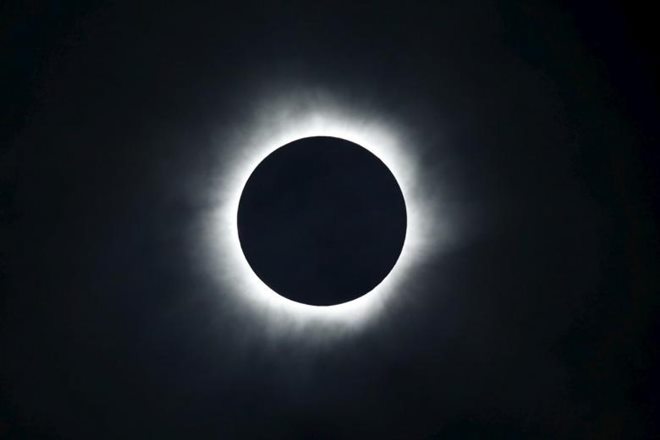
Astronomers May Have Found An ‘Exomoon’ Orbiting A Giant Planet Around A Star
A group of astronomers has potentially discovered the first known moon beyond the Solar System. If proved، the “exomoon” is likely to be about the size and mass of Neptune، and circles a planet the size of Jupiter but with 10 times the mass. The first evidence for an exomoon, a moon orbiting a planet orbiting a distant star may have been spotted in data from the Kepler space telescope.
Astronomers have potentially discovered the first known moon beyond our solar system, orbiting a giant planet around a star about 4,000 light-years away. Researchers from Columbia University in the US analyzed the dips in light from exoplanets passing in front of their stars in data from the Kepler space telescope.

The signal was detected by Nasa’s Kepler Space Telescope; astronomers now plan to carry out follow-up observations with Hubble in October. A paper about the candidate moon is published on the Arxiv preprint site. But surprisingly, exomoons, in general, may be rare, at least around planets close to their stars.
To date, astronomers have discovered more than 3،000 exoplanets, worlds orbiting stars other than the Sun. A hunt for exomoons, objects in orbit around those distant planets – has proceeded in parallel. But so far، these extrasolar satellites have lingered at the limits of detection with current techniques.
Alex Teachey and David Kipping of Columbia University analyzed the dips in light from exoplanets passing or transiting, in front of their stars. A second, smaller dip that appears ahead of or behind the planet could reveal the moon. Such exomoons, researchers have speculated, may be among the best places in the universe to look for extraterrestrial life. But because those signals are faint and inconsistent, they take a lot of computing power to find.
Dr. David Kipping، assistant professor of astronomy at Columbia University in New York، says he has spent “most of his adult life” looking for exomoons. For the time being, however, he urged caution، saying: “We would merely describe it at this point as something consistent with the moon but who knows، it could be something else.”
They analyzed 284 planets that seemed like good candidates for hosting detectable moons, ‘New Scientist’ reported. “Out of those, this object popped out,” Kipping said. Researchers said if the object exists, it orbits a planet slightly larger than Jupiter around a star about 4,000 light-years away. Since the potential moon is probably about the size of Neptune, the team nicknamed it “Neptmoon.”
But Dr. Kipping said this is not the best way to gauge the potential detection. He told: “We’re excited about it, statistically, formally, it’s a very high probability. But do we really trust the statistics? That’s something unquantifiable. Until we get the measurements from Hubble، it may as well be 50-50 in my mind.”
The team plans to check if the moon is really there by using the Hubble Space Telescope to watch for another transit on October 29. “We threw all of our tests at it, and it passed them,” Kipping says. “But we were still pretty suspicious. We knew the best way to confirm it was to get more data. Hubble is the best telescope for the job.” If confirmed, this moon would be almost in a class of its own.
A handful of possible candidates have come to light in the past، but none as yet has been confirmed. “I’d say it’s the best [candidate] we’ve had,” Dr. Kipping told me. “Almost every time we hit a candidate، and it passes our tests، we invent more tests until it finally dies – until it fails one of the tests… in this case, we’ve applied everything we’ve ever done and it’s passed all of those tests. On the other hand, we only have three events.”